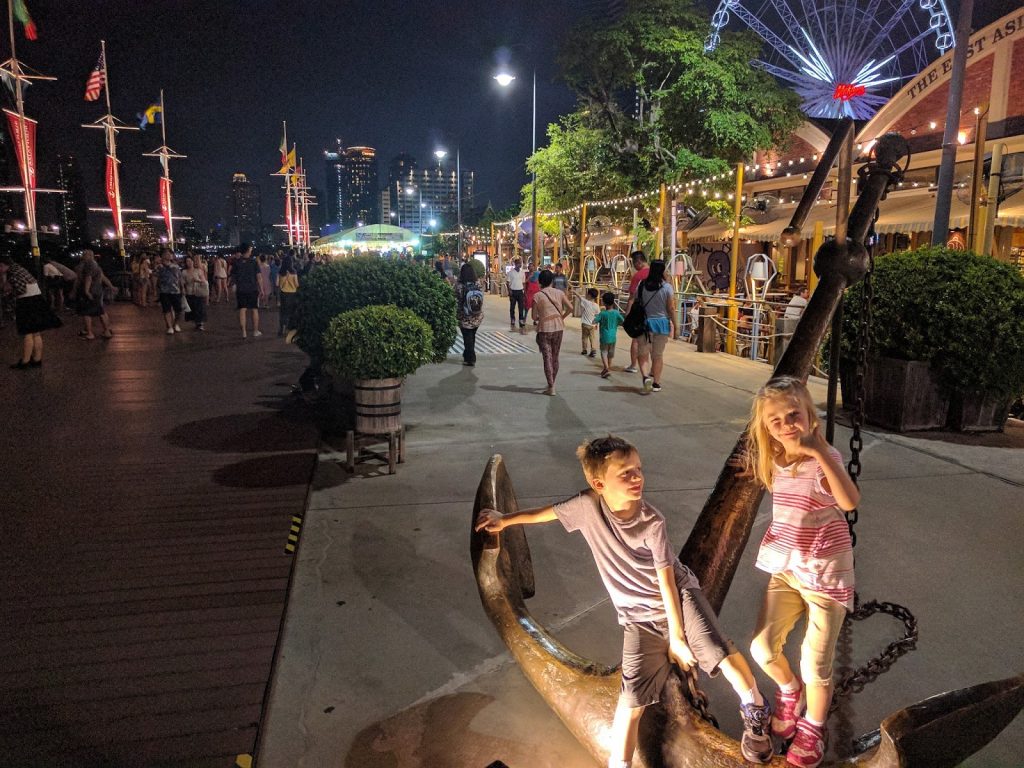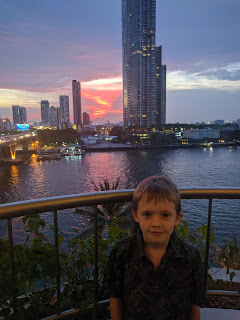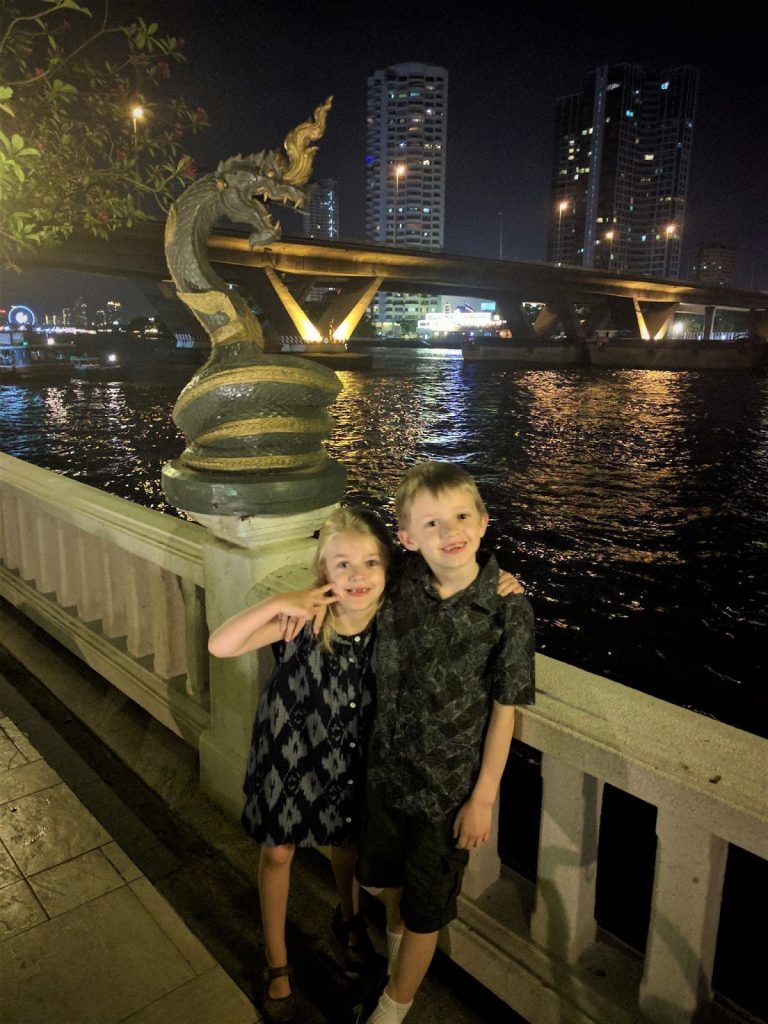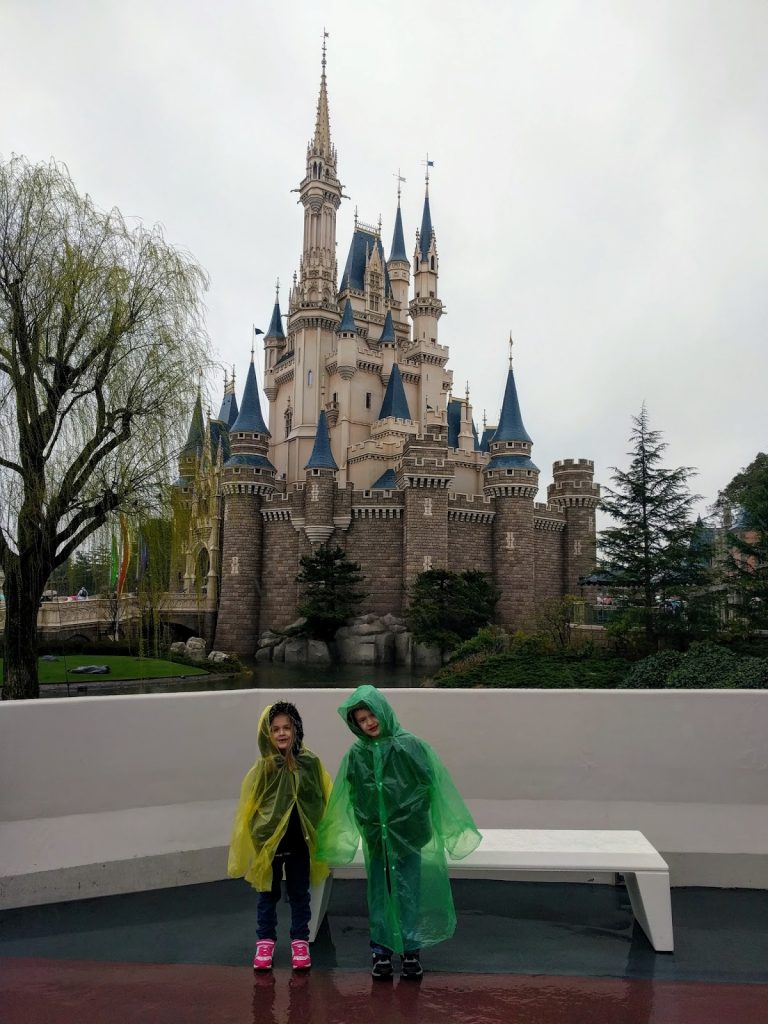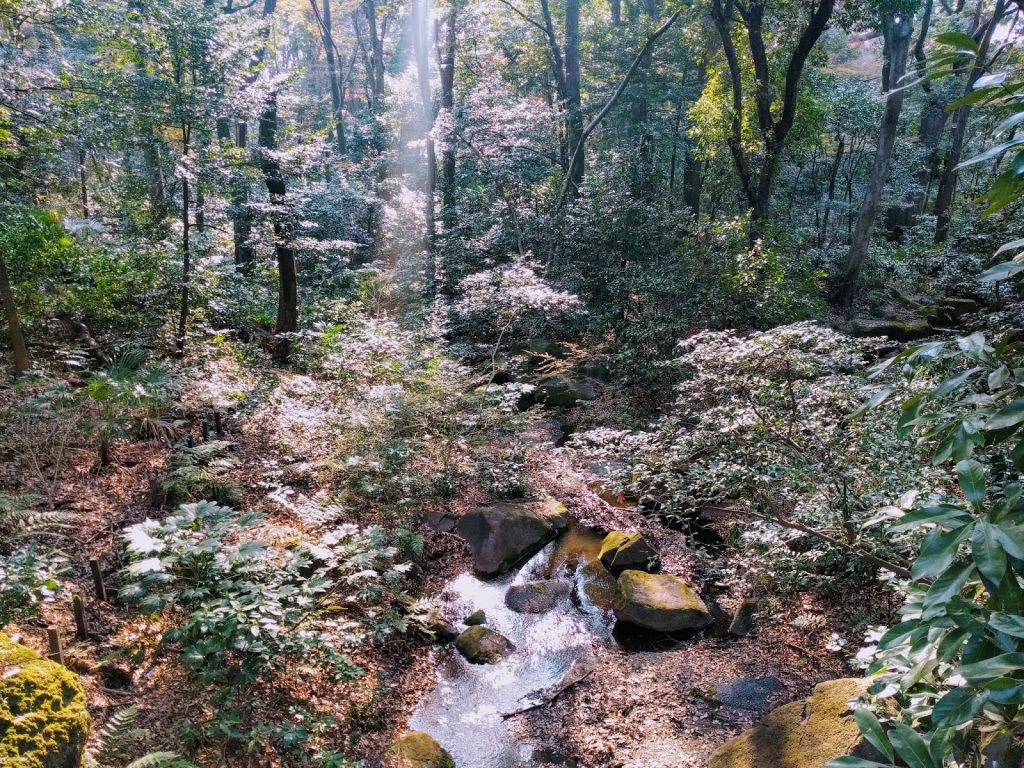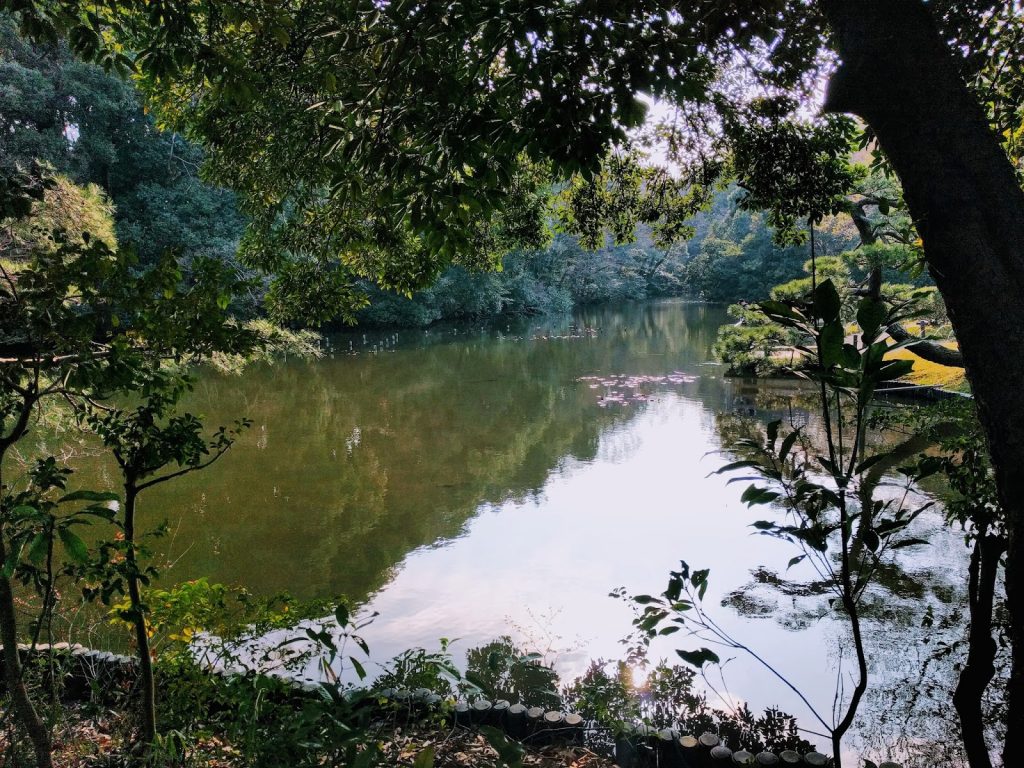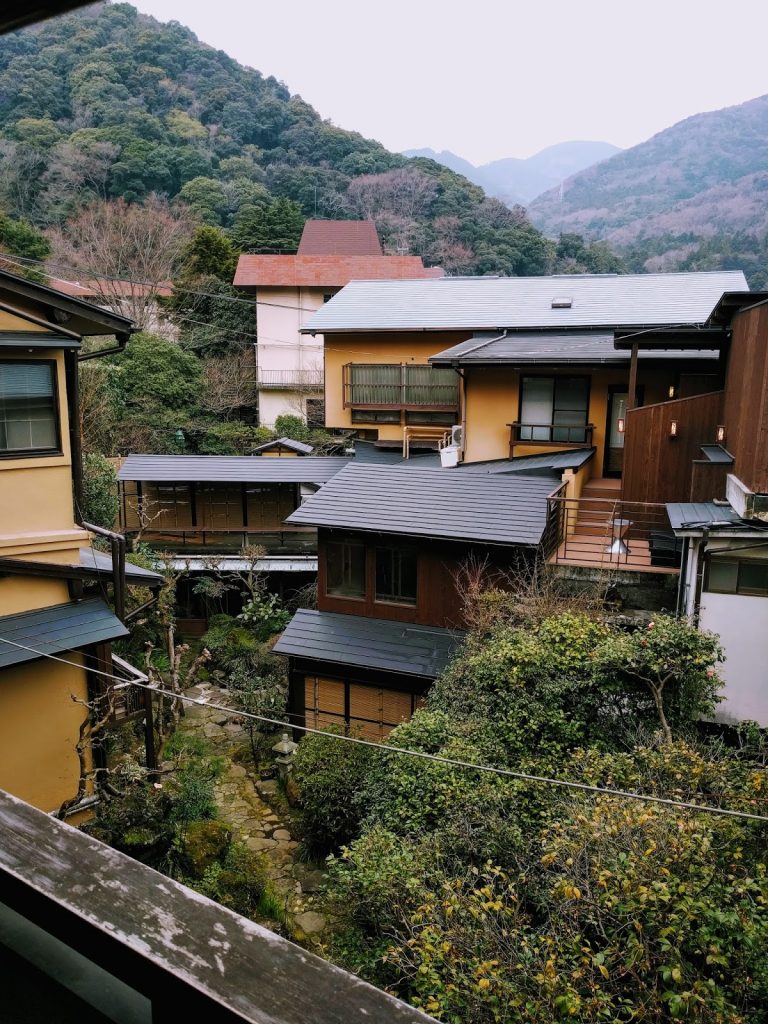We took our second R&R to visit Malaysia and Singapore. Unfortunately, we didn’t have enough time to visit any place in Malaysia outside of Kuala Lumpur, but maybe we’ll have an opportunity in the future.
I last visited KL in 2001. It’s quite a different place today. There are so many more high-rises and in every direction you look something is under construction. Like Thailand, Malaysia is a newly industrialized country, and it’s on the fast track to becoming a fully “developed nation” very soon.
First, a bit of history, because that’s my thing…
The Malay peninsula sits next to a pretty important sea lane, so it’s been hot property for centuries. It has been exposed to foreign trade and cultures, and a variety of religions held sway for various periods of time. Hinduism, Buddhism, and Taoism dominated for awhile, but Islam took hold around the 14th century. Today, Islam is the official religion of Malaysia, though the country is fairly multicultural, so only around 60% of its citizens actually practice Islam.

During the colonial era, Malaysia was claimed first by the Portuguese in 1511, then the Dutch in 1641, and then, in 1824, the Anglo-Dutch Treaty divvied up the “Spice Islands,” giving Malaysia to the British (“British Malaya”) and giving what is now Indonesia to the Dutch. Singapore was founded by the British as a trade colony a few years earlier, in 1819. During WWII, Japan invaded the peninsula and occupied Malaya and Singapore from 1942 till 1945.
Like so many of Britain’s colonies after the war, Malaya decided that it wanted independence. However, this was a complicated matter due to ethnic tensions within the colony. The British had brought Chinese and Indian laborers into Malaya over the previous century, and they wanted equal status to ethnic Malays in the new state. To further complicate the issue, the (Chinese) Malaysian Communist Party – which was a key player in the anti-Japanese resistance force (read: well-armed veterans) – decided to begin guerrilla operations against the British to force them out. In response, the British government began the “Malayan Emergency,” a counter-insurgency campaign that lasted from 1948 to 1960. Ultimately, the British claimed success, although their granting independence to Malaya in 1957 was the Communist Party goal all along.
In 1963, the colonies of Singapore, Sarawak, and North Borneo joined the independent Federation of Malaya to create the new country of Malaysia. But the state of Singapore, with its majority ethnic Chinese population, had too many disagreements with the federal government and race riots broke out between Chinese and Malay citizens in Singapore. Finally, in 1965, Malaysia booted Singapore from the federation and Singapore became fully independent as the Republic of Singapore.

My previous memories of KL include: a cheap hostel/hotel with a mint green wall that exactly matched Jen’s favorite shirt; a community bathroom with too small doors; a guy walking down the street with a plastic machine gun making shooting noises at people; a lot of walking; walking through a crazy heavy tropical downpour; a massive bird park; delicious Malaysian curries; and shop keepers asking if we were locals because we wore conservative clothes.
This time, my memories include: a couple super swanky malls with nothing I’d want to buy; a big Daiso; so many young, stylish people; Indian taxi drivers; a sketchy bird park; delicious foreign foods; fish foot cleaners; and Aaron’s crazy shirts.
I didn’t realize when I booked our hotel that we were right in the middle of the fancy, new part of town (or at least one of the fancy new parts of town). So many high-rises, many of which were under construction, and right across the street was a huge mall.

We ventured into the mall, not knowing what it was, because Google maps promised a lot of non-Korean food. (I love Korean food, but as an American I’m accustomed to variety.) It turned out to be an always-crowded, very high-end kind of mall (i.e., the kind of mall I do not understand), and in the central rotunda a Chinese fashion show was in progress, which was admittedly interesting to watch.

We tried a few restaurants in the mall. The Indian place was disappointing. The Middle Eastern place was amazing (and packed with Middle Easterners). The American burger place was not the best. The local Starbucks didn’t have chai. I feel like we also ate at a Japanese curry place, but honestly it’s a blur.
The one interesting part of the mall was “Tokyo Street” – an attempt at recreating a Japanese marketplace (or at least what people running a high-end mall would think a Japanese marketplace should look like). At the back of the street was a large Daiso, Japan’s dollar store. I love Daiso. So much fabulous and super cheap randomness, from Aaron’s specifically-sized drill bits to those little dolls that waggle in the sun to every size of Ziploc-esque plastic bag you can imagine to kawaii stickers for the kids to adorable chopsticks and sauce bowls. There’s stuff you don’t know you need, until you see it at Daiso and say, “Oh, my gosh! I’ve been wanting an egg mold!”


The next day, we visited Petronas Twin Towers. The 88-floor towers were the tallest buildings in the world when they were built in the late 90’s, and I believe they are still the largest twin towers in the world today. I remember, when Jen and I visited in 2001, standing on an elevated train station platform and looking across the city toward the twin towers. At the time, they seemed so huge and so lonely, standing above a not-yet fully developed, ex-colonial city. Today, they fit right in with other massive skyscrapers all over the place. In fact, a 77-story building is going in right next door.

At the base of the towers is Suria KLCC, another overpriced mall. Fitting with the theme is overpriced admission for the skybridge – a walkway that connects the two towers at the 41st and 42nd floors. Jen and I skipped the towers on our visit, but maybe we shouldn’t have; admission was free back then. Now I refuse to pay $20 per person for the privilege of having an acrophobic panic attack in a metal tube that’s not even going to take me anywhere. Instead, we wandered into the park out back, purported to hold one of the world’s largest outdoor playgrounds. The kids were pretty excited until we got there. It was… okay. Hot. Muggy. No drinking fountains. We didn’t stay long.
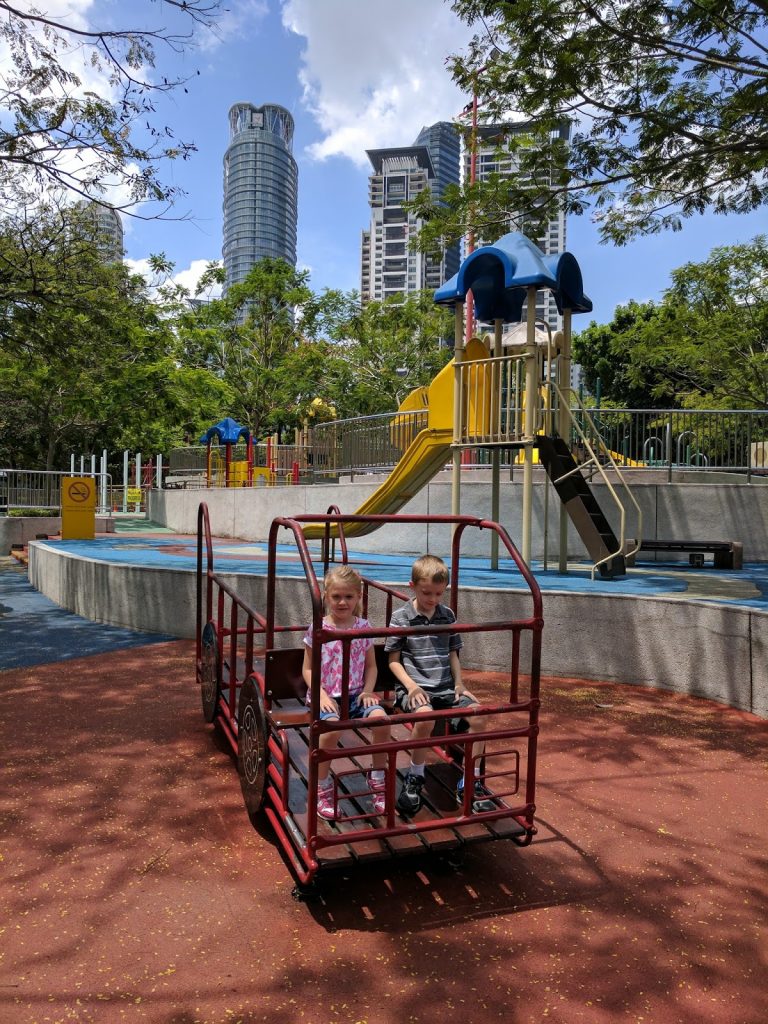
On day 3 we were off to the KL Bird Park. It claims to be the largest open-air aviary in the world. In my memories, Jen and I walked among peacocks and crested pigeons, while tropical birds flew around and trees poked through the netting dozens of feet above us. I also remember walking to this place. Retracing that path in a taxi, I have a newfound sense of respect for my old self.
I’m going to pause a moment here, to briefly explain something about my husband. Aaron has a very keen sense of smell and a very keen immune response system. Very keen. He once sniffed a cup of yogurt Connery was eating and correctly determined the boy was sick. In fact, the reason I had him sniff the yogurt was because I thought it might be going bad, which Aaron can also ascertain from a sniff. (Don’t ask my why I was feeding my son questionable yogurt. Life is hard for a new mom.) Anyway, Aaron is my walking germ detector. And when we walked into the bird park and I heard him say, “Uh, oh,” I suspected we might not be staying long.

The place was sketchy as Hades. Bird crap everywhere. Broken paths and fences. Wounded and dead birds lying on the sidewalks. I texted Jen as we were walking around to ask if it was this bad when we visited, and she recalled it being pretty questionable.


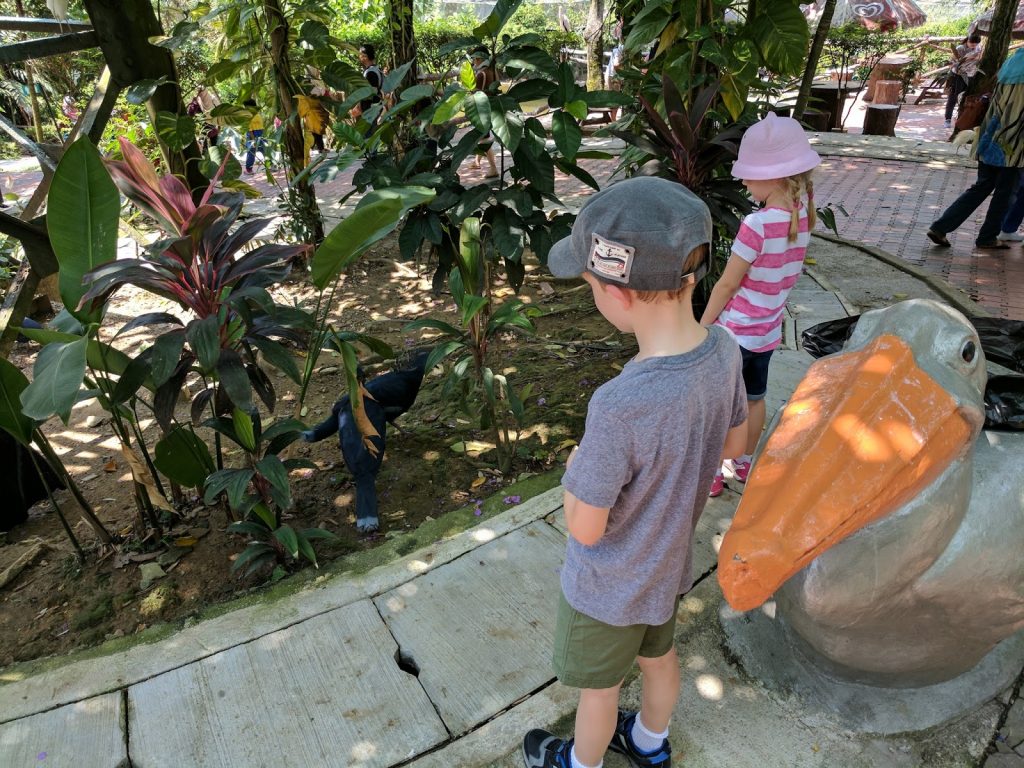
Since we already paid the entrance fee, we decided to at least take a quick walk around the park. Near the back of the park, descending from a small hill, I noticed some construction work being done along the side of the pathway. Just when I was wondering what that odd powder covering the bricks was, I heard Aaron say, “It’s poison! RUN!”
Without asking any follow-up questions, I grabbed the kids’ hands and started running down the path. “Go, kids! Go!!”
“Why are we running?” yelled Lena.
“It’s dangerous!” I said, still running.
When we were finally a safe distance away from the offending powder, I asked Aaron what it was.
“Huh? What powder?”
“The white stuff.”
“What are you talking about?”
“The poison.”
“Not poison, really. The water. That waterfall thing back there pouring water into this pond. It was covered with some kind of red scum bacteria and my immune system went crazy!”
“…”
Needless to say, we didn’t stay much longer. Aaron’s immune system insisted that we leave asap, so we power-walked our way to the exit and that was that.


(Note: Small Picture)
From there, we went to the Central Market. Originally built in 1888, but remodeled to its current size in 1933, the market was saved from development demolition by the Malaysian Heritage Society. (Thank you, Heritage Society!) It’s a charming old building with many original Art Deco elements still in tact. Shop wares ranged from your standard touristy trinkets to fancy Indian rugs to Malaysian batik. We had some delicious teh tarik and nibblies at an adorable cafe, watched Aaron giggle like a madman at the Toothless Carp foot cleaning pool, bought some batik clothes for the kids, and bought some surprisingly daring (for an engineer) shirts for Aaron.

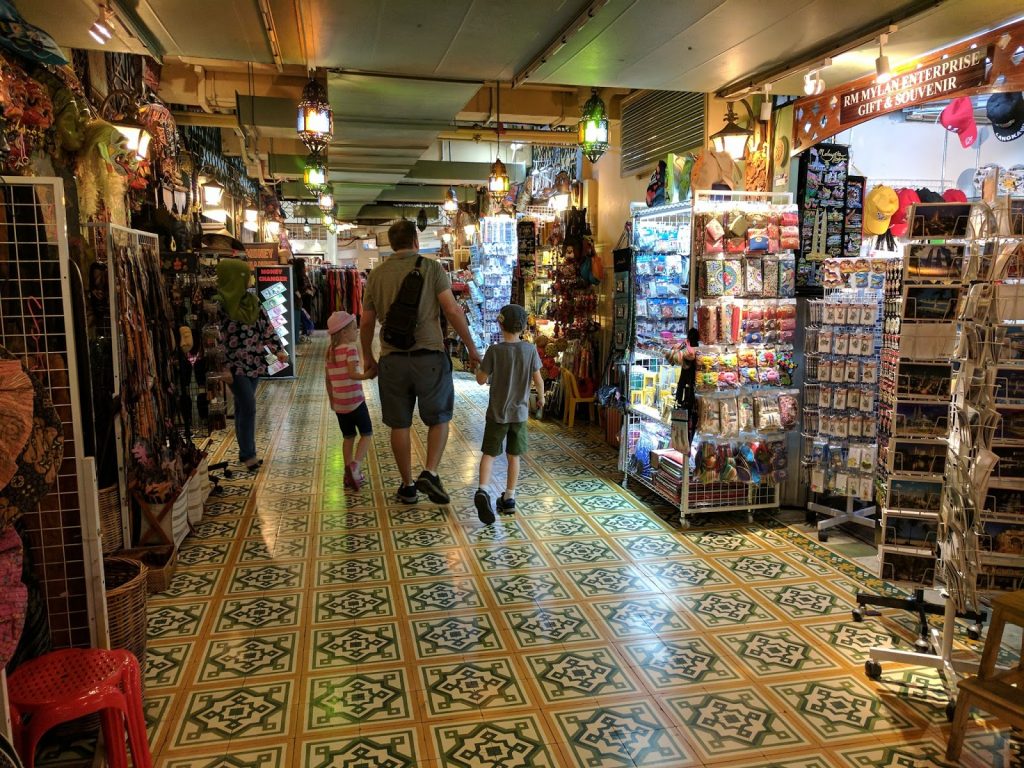
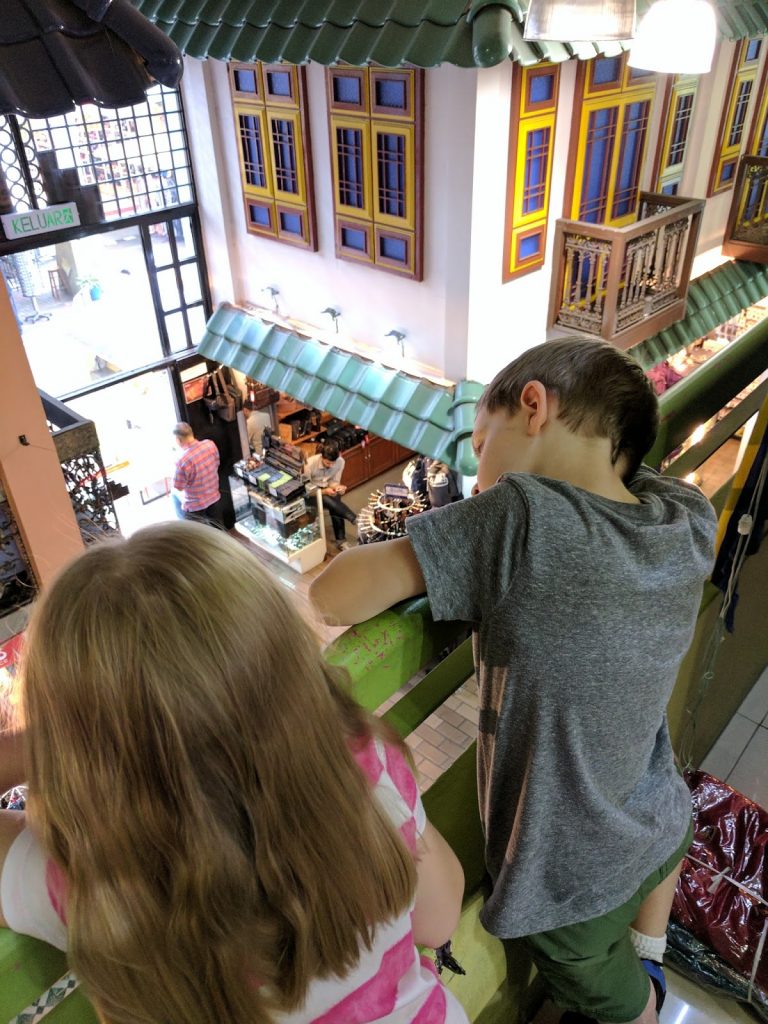
I would have liked to have more time to explore areas outside Kuala Lumpur. When Jen and I last visited, we stayed at some pretty fun little guesthouses in the smaller towns, and took a two hour (motorized) canoe ride into the rainforest where we hiked with leeches and swam through guano in bat caves. Good times. I hesitate to try that now, seeing as how my son throws up if you try to feed him ice cream that isn’t pink. I’ll wait till they’re a bit more adventuresome to do the guano cave thing.
I was hoping at least to travel from KL to Singapore the same way Jen and I traveled from Singapore to KL back in the day: the overnight train. My kids would have loved it. Unfortunately, a train no longer runs directly between the two cities. When Jen and I did it, we got on the train in Singapore at the lovely old Art Deco colonial Tanjong Pagar train station (ca 1923). From there, we went straight up to the Kuala Lumpur train station (ca 1910), an equally gorgeous Neo-Moorish colonial building. Sadly, both of these stations have closed since then. We drove past the KL station; it looks as if it’s falling into disrepair and I don’t know if there are any plans for it. The Tanjong Pagar station is being reworked into community spaces and a park.
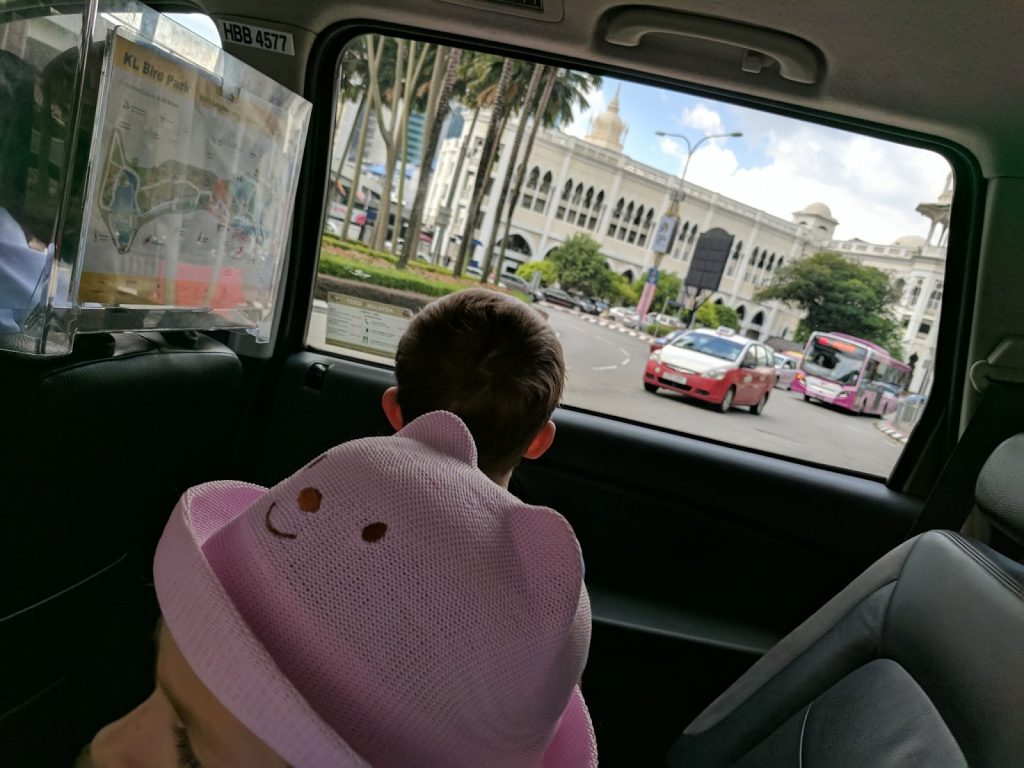
Interestingly, the reason for all this was because the land beneath Tanjong Pagar station, the 16 miles of tracks leading to it, and the land beneath the tracks were technically owned by Keretapi Tanah Melayu (KTM), Malaysia’s railway. It was as if your ex-wife left you the house, but still owned the floor under your dining room table and the path leading from it to the front door. Singapore hated it. The two countries squabbled about this arrangement for decades until finally reaching an agreement in 2010 that turned the land back over to Singapore.*
If you want to take a train from Singapore to KL today, you must first take a taxi all the way to the northern border with Malaysia, take a shuttle train across the Causeway/border, take another taxi to the train station in Johor Bahru, and board there. Then, since Malaysia is in the process of upgrading all their railways, you can only take the train from Johor Bahru to Gemas, where you must switch to a train on the new lines to take you to KL. For us to do all this in reverse, from KL to Singapore, we’d have had to catch the 1:00 am train to make it by nightfall. Plus, it would all cost us a few hundred dollars.
So what do most people do now?
Obviously, they fly. Air Asia is $15 one way and it takes less than an hour.
I noticed something interesting on our flight down to Singapore (note: we didn’t actually fly Air Asia; they don’t exactly have the greatest safety record). Looking out the window, all I could see on the ground for miles and miles and miles were palm oil plantations. I’m not even exaggerating when I say it was nothing but palm oil trees, all packed in neat little rows, from directly beneath us to the horizon.

that’s a refinery in the foreground
Palm oil is one of Malaysia’s biggest industries, accounting for 5-6% of GDP. Introduced from West Africa in the late 1890’s, palm oil trees were first commercially cultivated in 1917. In the 1960’s, the government pushed an expansion in palm oil as it tried to diversify from the British colonial industries of tin and rubber. Today, Malaysia is the world’s second biggest producer, just behind Indonesia; the two countries account for 90% of world supply. And demand is expected to continue increasing, because palm oil is cheap, clean enough to be considered for biodiesel, and versatile enough to be used in everything from bread to lipstick to detergent. It is the most produced oil in the world, just ahead of soybean (palm oil trees are 10 times more productive per unit area than soybean). Millions of hectares have been converted to palm oil plantations and hundreds of thousands of Malaysians depend on the industry. Its growth has lifted many Malaysians out of poverty.
But there is a dark side. In converting jungle and forest to plantations, Malaysia (and especially Indonesia**) has decimated its biodiversity, threatening hundreds of thousands of animal species. Orangutan habitat in northern Borneo has been almost completely destroyed. Forest fires set to clear land for plantations in Indonesia have created serious air quality problems throughout the region (fires that spread out of control for months in 2015 created such a severe “haze” that it constituted a major public health crisis throughout all of Southeast Asia and cost Indonesia tens of millions of dollars to mitigate). Indigenous peoples have had land confiscated for plantations. Pesticides and herbicides are polluting water sources. And the palm oil industry is one of the worst in the world for use of slave and child labor.
It looks like things are starting to improve, though, as the government is now tackling these problems and more people and businesses push for sustainably harvested palm oil. Malaysia has also pledged to keep at least 50% of its land covered in native forests (a recent estimate put it at 58% currently). Since they cannot expand their land, plantation owners are seeking new ways to improve the supply that comes from established trees.

Moving on to Singapore…
I might have mentioned this before, but it’s difficult in Asia to find hotel rooms that accommodate 4 people. Most “family” rooms are for 3 people. Some accept babies and little kids for free in existing bedding, but my kids are now ageing out of that demographic. However, this issue occasionally leads me to fun and quirky hotels I might not have noticed otherwise.
Such was the case with the Hotel Jen Tanglin in Singapore. What a great hotel! It was reasonably priced. Our room had a separate bedroom, a sofa bed, and a small kitchenette with a full-sized fridge they stocked with water and fruit cups. Plus, we paid a bit more to stay on the “club level,” which allowed access to the “club room” that provided a breakfast buffet every morning, afternoon munchies, and 24-hour coffee, tea, drinks, and cookies. The hotel’s pool was, interestingly, on the roof of the mall next door, and it also had a special covered bridge connecting the hotel to that mall. And, most importantly, it was close to the Botanic Gardens.


The Singapore Botanic Gardens is a 158-year-old UNESCO World Heritage Site. Founded in 1859 by an agri-horticultural group, the Gardens had a lasting impact upon Singapore and the region. Its first scientific director, Henry Nicholas Ridley,*** developed the means to harvest latex from rubber trees and also helped establish the rubber tree industry on the Malay Peninsula. The National Orchid Garden, within the Gardens’ grounds, is pretty much top everything when it comes to orchids.


I’ll spare you all the details of our visit. It was beautiful, but hot and exhausting. Having walked about a mile from our hotel to the Gardens, then through the Gardens, by the time we reached the Orchid Garden, I was… well, let’s just say, “a little hot and sweaty.” A far cry, to be sure, from the ladies fresh off the bus tour wearing cocktail dresses and heels. None of their makeup was puddled in sweat pools around their face.






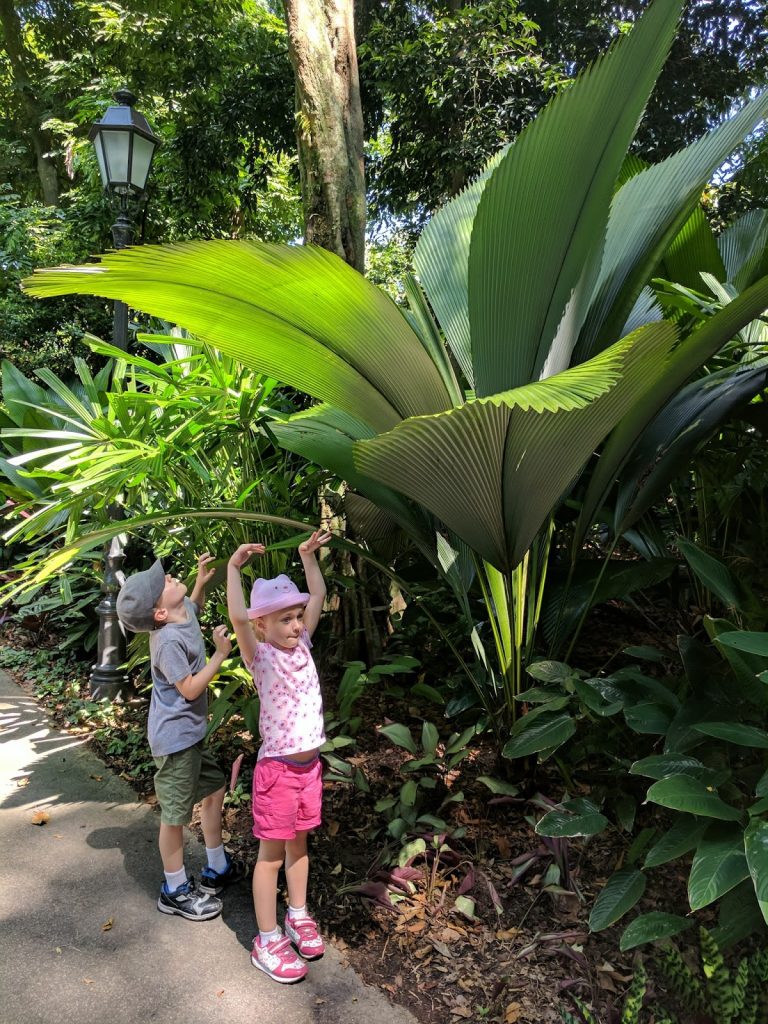
Later that evening, we wanted to visit the Marina for dinner and a view of the Merlion. Unfortunately, we did not realize that Singapore was preparing for its National Day celebrations, and so was staging a National Day practice, which apparently is as fancy and spectacular (and heavily attended) as the actual National Day celebration. We couldn’t get anywhere near the Merlion. We arrived just after the fireworks, so security guards refused to let us even walk toward the water because the massive crowds were surging in our direction. With no other choice, we joined the crowds and walked back along the road we had just come down, until Hangry Meg forced us to stop at that place or that place – any place, it doesn’t matter, just get her some food.
We took the MRT back to the stop closest our hotel, which was sadly not that close. Then we got lost trying to find a taxi (tired kids at 10:30 pm aren’t terribly interested in walking), but there were no taxis to be found, probably due to the celebrations. Finally, we walked into some random hotel lobby, thrust an exhausted and sweaty but still adorable little blue-eyed girl in their faces and said, “Please, sir, may I have a taxi?”
After that, we switched to a hotel down on Sentosa to do some resort-y stuff amongst roaming peacocks and “monkey incursions.” Connery loved the cable cars that take you around Sentosa. LOVED them. He later declared it his favorite part of the trip.


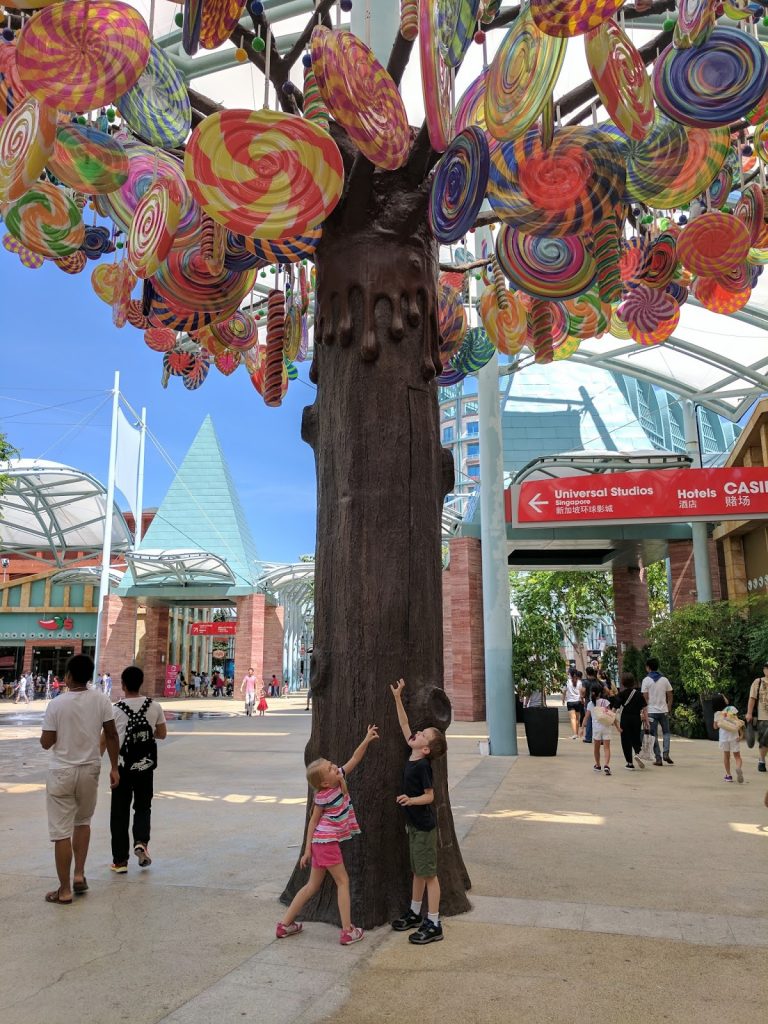
Meg: “Sweet dreams, Lena. I hope you have
happy dreams about… uh… lollipop trees!”
Lena: “Lollipop trees??”

We took one day to head back into town to visit Little India (I have fond memories of being there with Jen) and to visit the Marina for a harbor cruise and more delicious foreign foods. But other than that we chilled by the kiddie pool slides most of the time, watching the kids run up the rocks and go down the slides over and over and over again. It was definitely easier to do with a piña colada in hand.
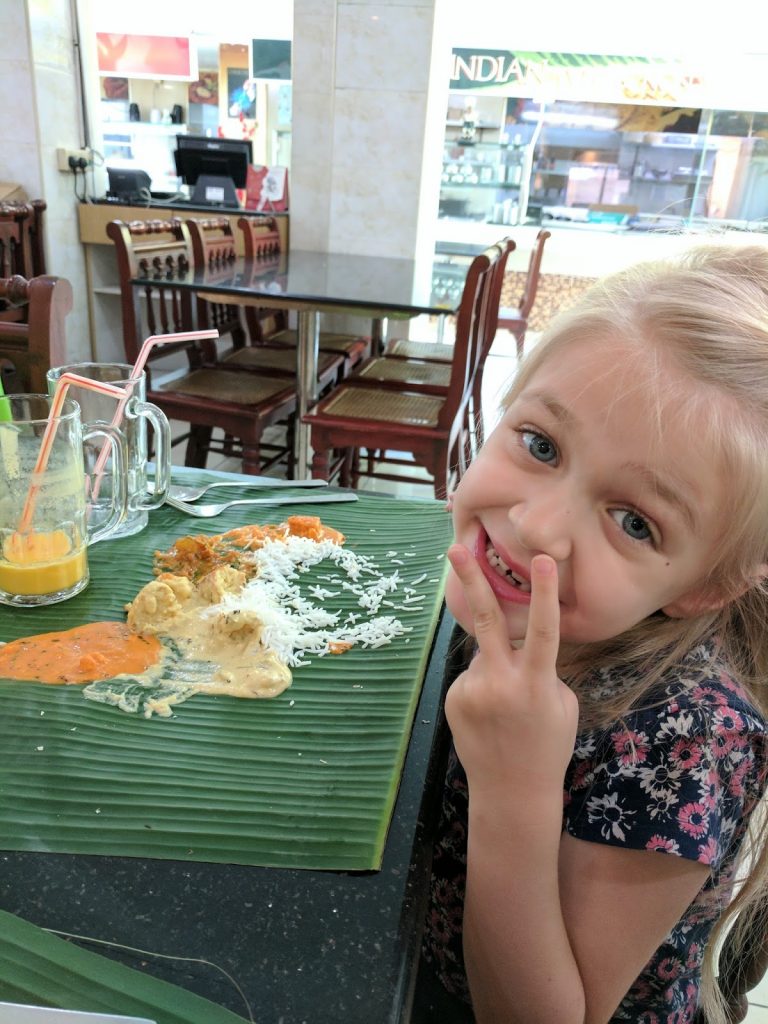

were the Indian shopkeepers in Little India
and the Indian taxi drivers in Kuala Lumpur…
apparently, they don’t mind spirited political debates
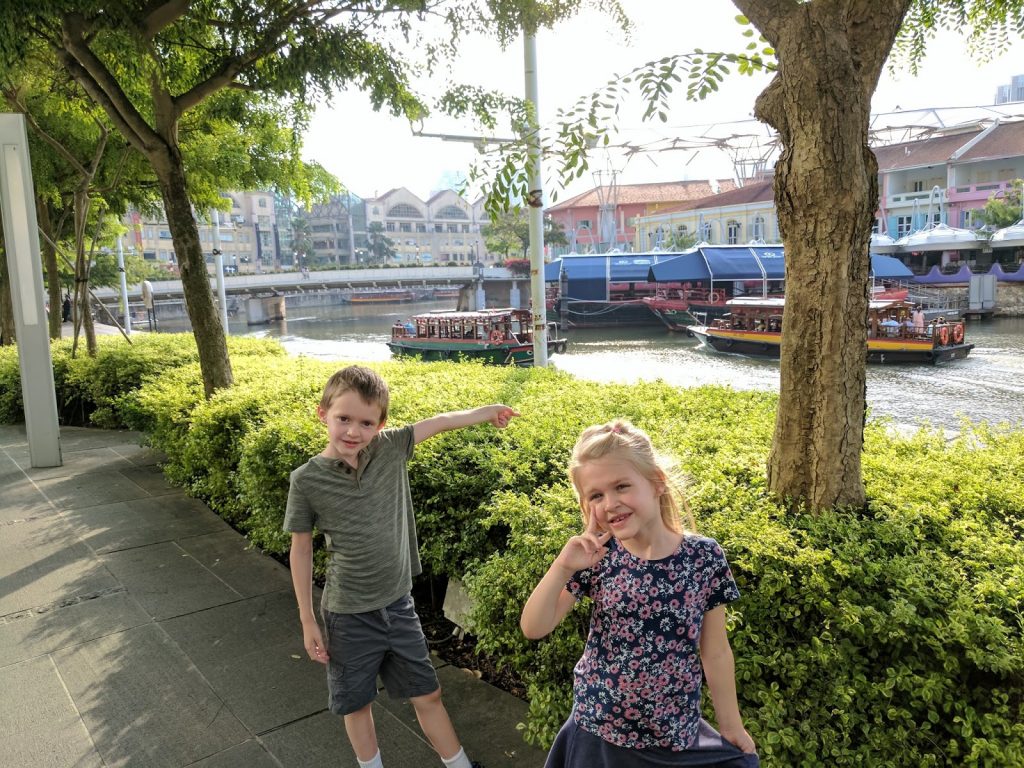






(one guy had to act drunk… he wasn’t very good)
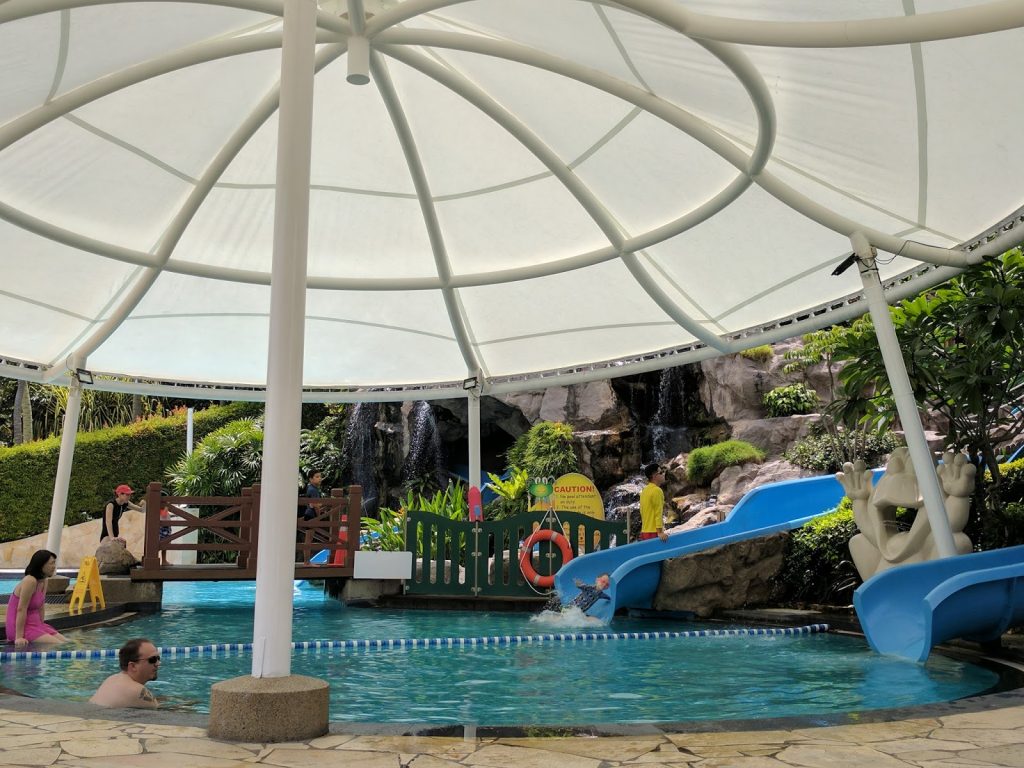

Singapore has been pretty well developed for awhile now, so there wasn’t much difference between my last visit and now, except for a few new ostentatious buildings down by the Marina. Oh, and they moved the Merlion to a new location.
So, that was it. If you’re still reading till now: Congratulations! …and thank you. 😊
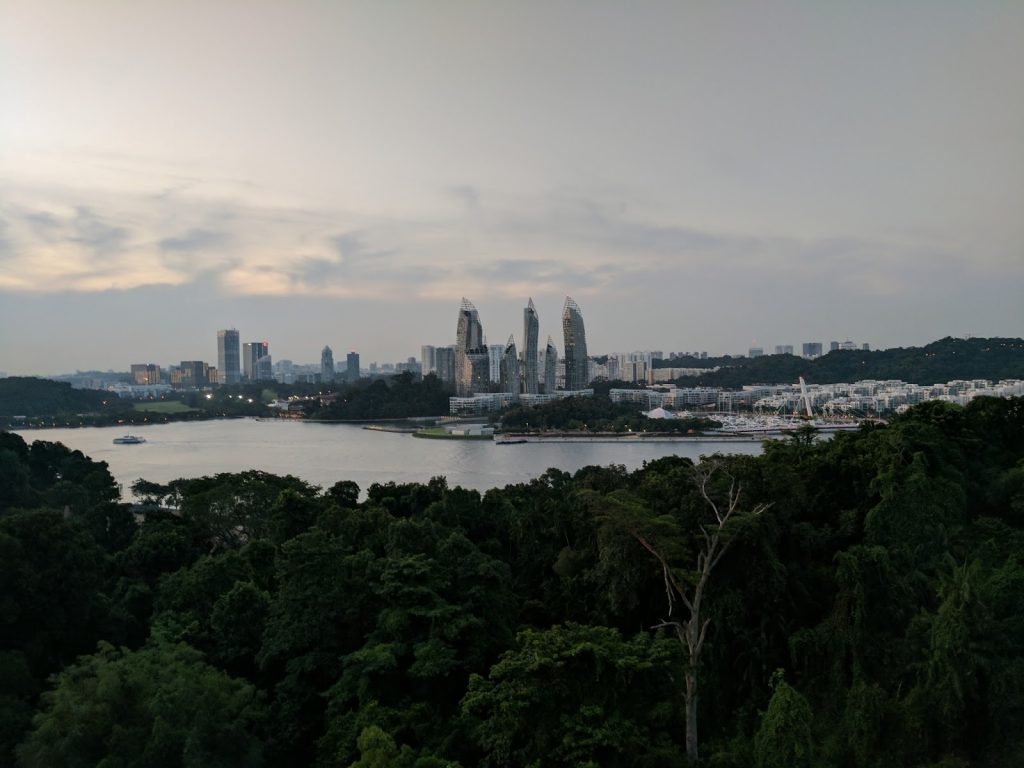
*The last train out of Singapore was driven by Sultan Ibrahim Iskandar, ruler of Johor, whose great-grandfather, Sultan Ibrahim, opened the Causeway in 1923. In his article, “Why I drove the last train out,” Sultan Ibrahim Iskandar included this paragraph: “Besides trains, I fly jets, helicopters, and I sail my own yacht. I am never a boring person. Everything to me is a challenge. I always like to find something new to do. Every day, I look at the weather and think to myself, what should I do today?” …Seems like a humble dude.
And, yes, Malaysia has sultans. It is a constitutional monarchy; technically, a federation of 13 states with a central government. They have a prime minister and an elected king running the federal government, but most of the states have hereditary monarchs.
**One hundred years ago, 84% of Indonesia’s land was forested. A 2007 report by the U.N. analyzing the rate of deforestation in Indonesia estimated that the country will have cleared 98% of its forests by 2022. In fact, logging and forest burning has made Indonesia the third largest emitter of greenhouse gases, after the U.S. and China. Thankfully, the rate of destruction has slowed in recent years. In 2010, Norway gave Indonesia $1 BILLION to stop deforestation, and Indonesia responded by putting a moratorium on new plantations. The two are working together to combat corruption and to restore Indonesian peatlands. Norway also gave Brazil $1 billion to do something similar in the Amazon, which led to a 75% reduction in deforestation there. Dang, Norway. I’m sure it’s from your oil fund, so it’s all a little ironic, but still… good job.
***I can’t list every awesome thing this guy did, but suffice to say he kicked (science) bootie. By the time he died at 100 years old, he had written over 500 books and papers on biology, botany, and zoology. Plus, he got married for the first time at age 83 and was known as “Mad Ridley” because of his passion for rubber trees.































